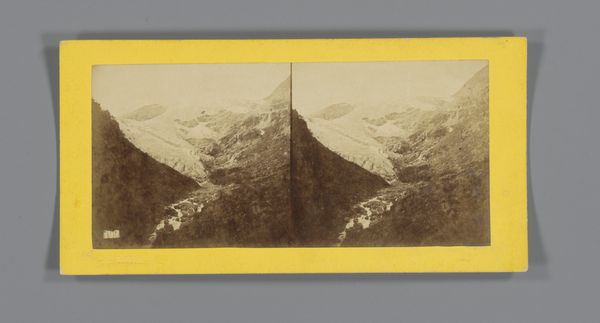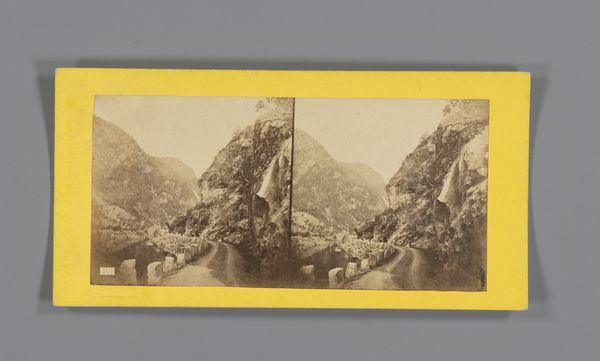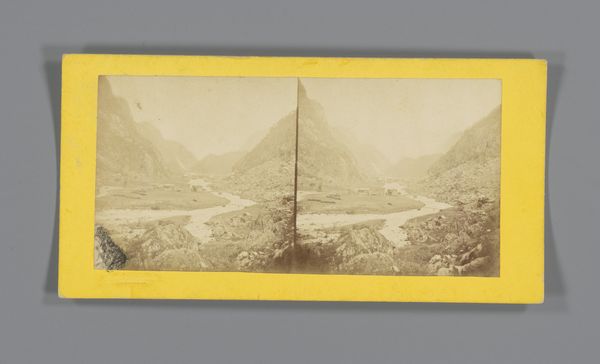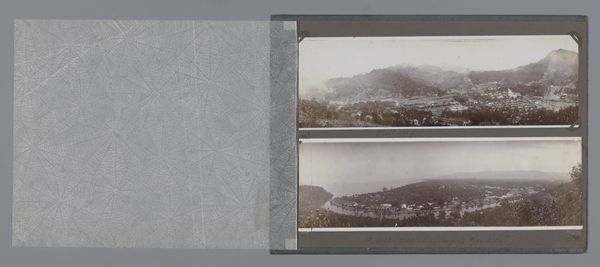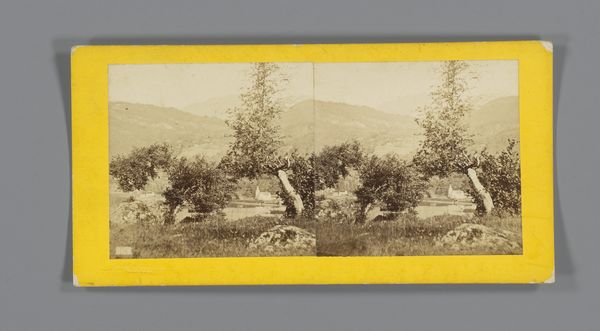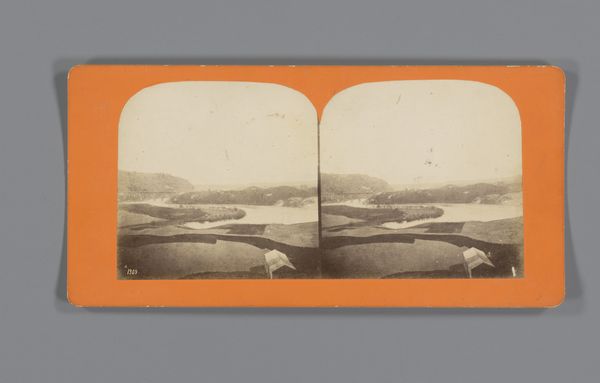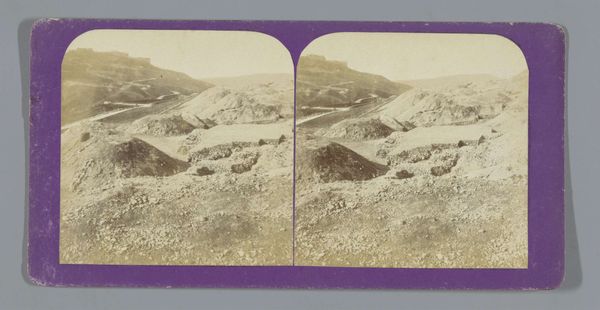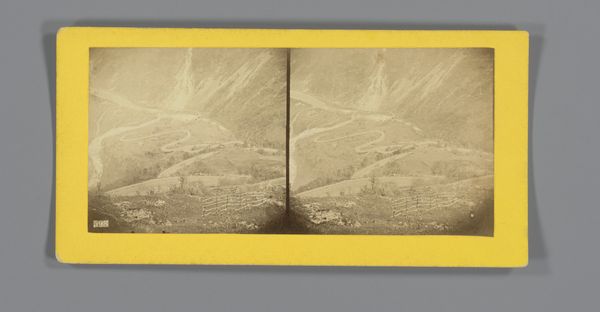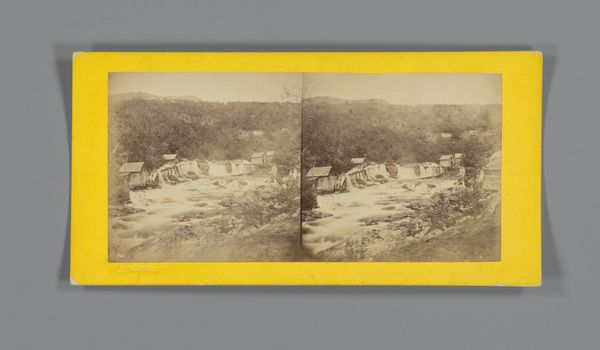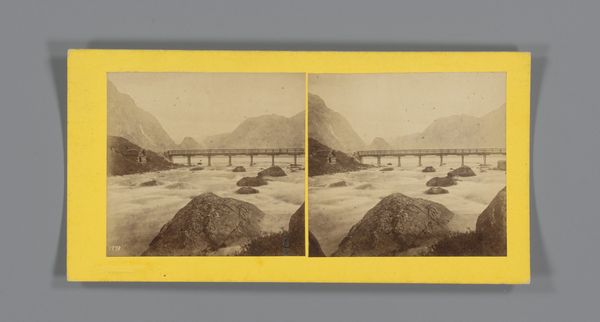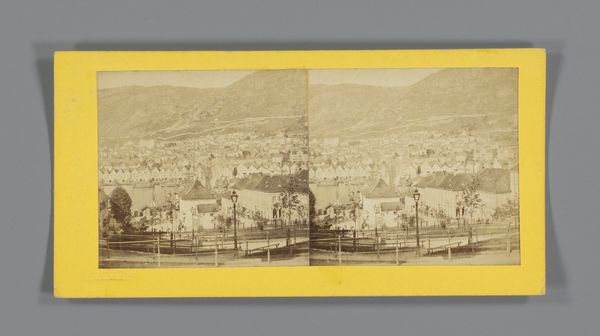
Dimensions: height 88 mm, width 178 mm
Copyright: Rijks Museum: Open Domain
Curator: What an evocative image! This albumen print, likely dating from the 1860s, offers us "A View of the Surroundings of Stalheim, Norway," captured by Knud Knudsen. There’s a stillness to this work that I find so compelling. Editor: Yes, the first thing that strikes me is the scale. It's a relatively small photograph, yet it captures such a vast landscape. And the textures! I’m interested in the albumen process itself. Curator: Precisely! Albumen printing, incredibly popular at the time, involved coating paper with egg white, creating a glossy surface for the photographic emulsion. Knowing this process, one begins to understand photography as both a commercial enterprise and a specific way of image production and consumption linked with technology of its time. We see it as a cultural object produced using techniques, labour and means of the moment in which it was made. Considering gender and labor, albumen prints like this are always associated with unpaid women’s domestic labor during that period since they were typically charged to do all housework tasks. Editor: So, it's literally bound by those domestic material processes! It adds layers of meaning to how we consider labor in the art itself, from the photographer in the field to someone meticulously preparing the paper in another setting, quite probably within a family unit, reflecting specific dynamics of society then. What are the means of distribution of an albumen print such as this? And how would they then function as commodities to exchange? Curator: Absolutely. Consider the societal pressures on individuals traveling to or residing in such remote landscapes – it shapes the aesthetic. There are colonial undertones there when you begin thinking in terms of how people saw landscapes that had been considered previously less interesting or exotic by Europeans. We should then ask ourselves: to what use were the images ultimately meant, if not that? And whom might that affect most strongly as time would advance across coming generations. Editor: It all boils down to access. Who could afford the photograph, and by extension, who had the means to access the actual view, both geographically and economically. Curator: Indeed, that is something that must remain in sight, at all times. Thank you! Editor: And thanks to you for contextualizing that which underlies material processes!
Comments
No comments
Be the first to comment and join the conversation on the ultimate creative platform.
